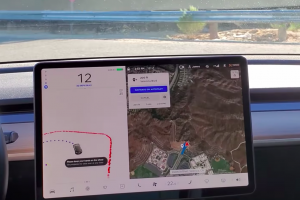Despite Tesla China focusing heavily on exports in January 2022, the Model Y managed to retain its place as one of the country’s best-selling vehicles. As per data from the China Automotive Technology and Research Center (CATARC), Tesla sold a total of 16,496 Model Y domestically in January, making it the country’s top premium SUV.
With such results, the Model Y effectively dominated competitors from both international and local rivals. The gap between Tesla’s crossover and its competition is quite notable as well, as the second-best-selling premium SUV in China, the Lixiang ONE, sold 12,426 units over the month. Other premium SUVs sold far less, such as the NIO ES6, which sold 5,525 units, and the BMW iX3, which sold 1,914 units in January.
There is something quite impressive about the Model Y’s performance in China last month. Tesla China, after all, adopts a strategy where the first half of every quarter is heavily allotted for exports. This meant that in January, the Model Y’s domestic sales in China were throttled by a substantial degree. Despite this, the vehicle still finished the month as the country’s best-selling premium SUV.
As per data from the China Passenger Car Association, Tesla China’s wholesale figures for January 2022 reached 59,845 vehicles, a 286.5% increase year-over-year. From this number, 40,499 vehicles were exported to foreign territories, while 19,346 were sold domestically. Considering that the Model Y accounted for 16,496 of the company’s domestic sales, it appears that the crossover SUV is gaining some considerable traction in the local auto market.
While Tesla China is already increasing its vehicle production output at an impressive rate, the company plans to accelerate its growth even more in the coming years. Tesla CFO Zachary Kirkhorn outlined this during the Q4 and FY 2021 earnings call, when he stated that the company’s goals of achieving 50% growth year-over-year should be possible with just the Fremont Factory and Giga Shanghai.
“We continue to drive for vehicle volume growth at or above 50%, as Elon mentioned, and our plans show that this is actually achievable with just our Fremont and Shanghai factories. For quite some time now, these factories have been running below capacity due to macro challenges with supply and logistics… From what we’re seeing, the pace of growth in 2022 will again be determined by supply chain and logistics, which is quite difficult for us to forecast,” Kirkhorn said.





